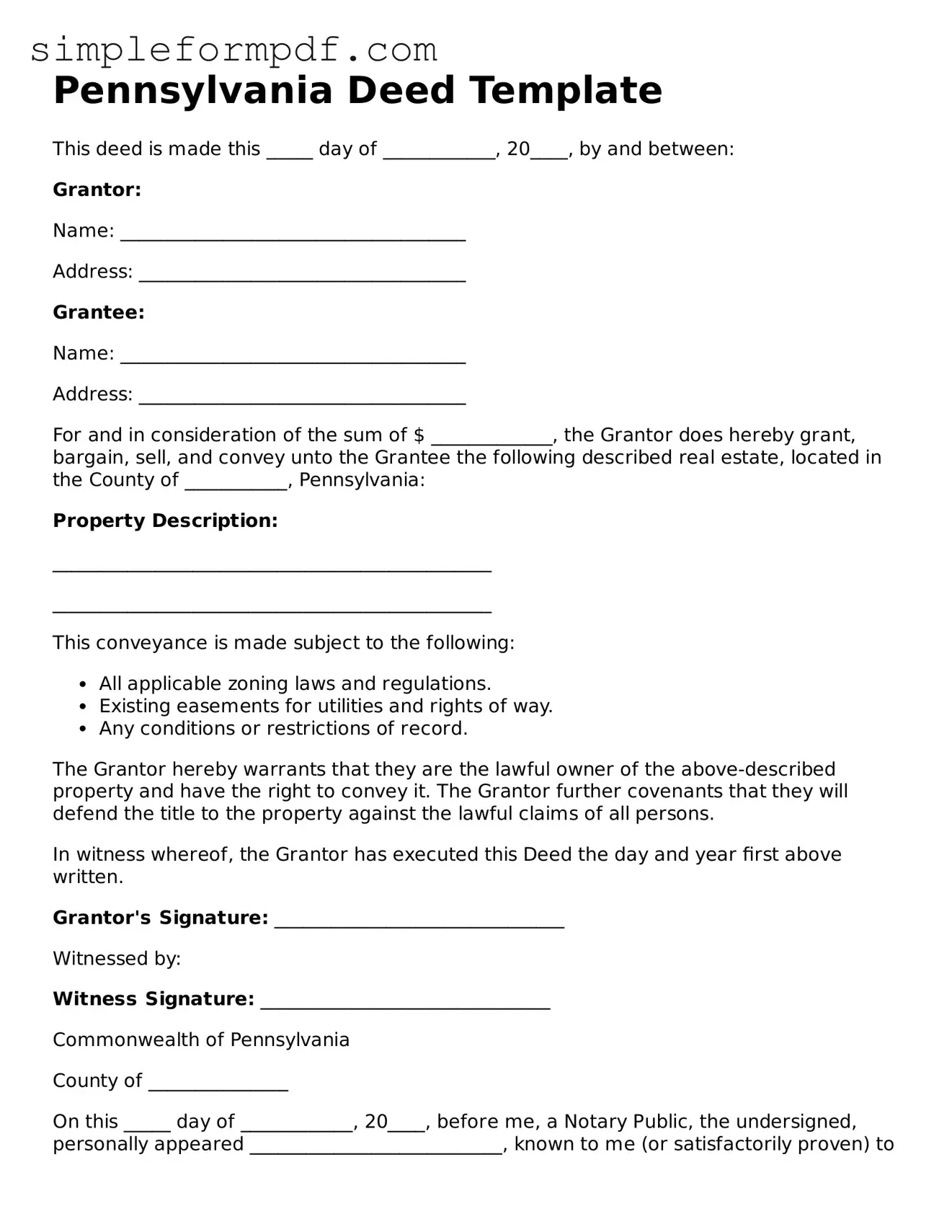Pennsylvania Deed Template
This deed is made this _____ day of ____________, 20____, by and between:
Grantor:
Name: _____________________________________
Address: ___________________________________
Grantee:
Name: _____________________________________
Address: ___________________________________
For and in consideration of the sum of $ _____________, the Grantor does hereby grant, bargain, sell, and convey unto the Grantee the following described real estate, located in the County of ___________, Pennsylvania:
Property Description:
_______________________________________________
_______________________________________________
This conveyance is made subject to the following:
- All applicable zoning laws and regulations.
- Existing easements for utilities and rights of way.
- Any conditions or restrictions of record.
The Grantor hereby warrants that they are the lawful owner of the above-described property and have the right to convey it. The Grantor further covenants that they will defend the title to the property against the lawful claims of all persons.
In witness whereof, the Grantor has executed this Deed the day and year first above written.
Grantor's Signature: _______________________________
Witnessed by:
Witness Signature: _______________________________
Commonwealth of Pennsylvania
County of _______________
On this _____ day of ____________, 20____, before me, a Notary Public, the undersigned, personally appeared ___________________________, known to me (or satisfactorily proven) to be the person whose name is subscribed in the above instrument, and acknowledged that they executed the same for the purposes therein contained.
Notary Public: _______________________________
My Commission Expires: _______________________
